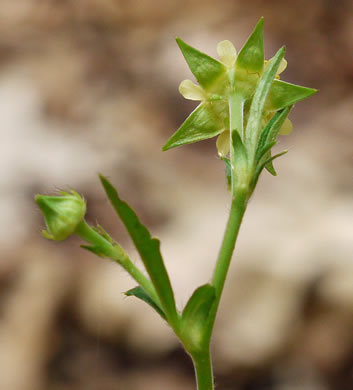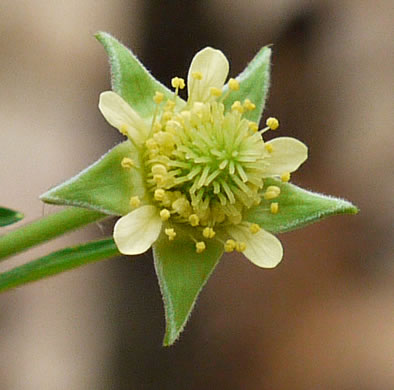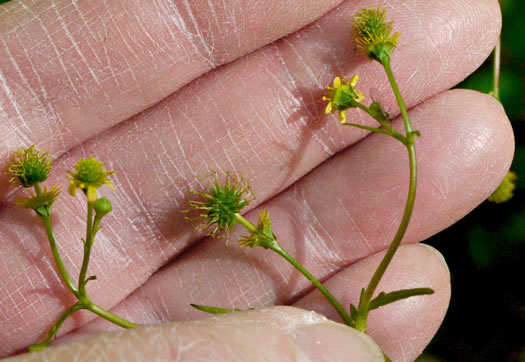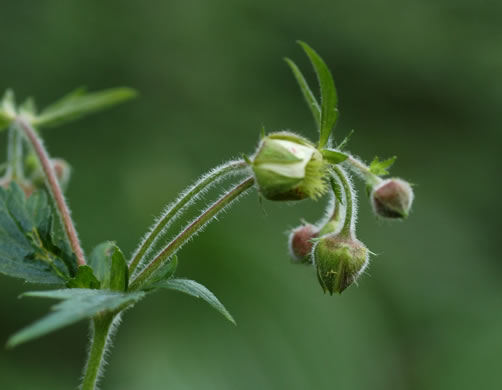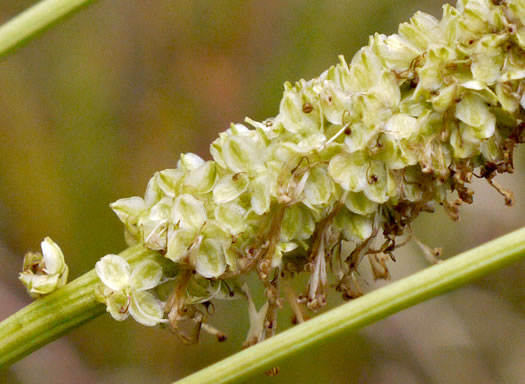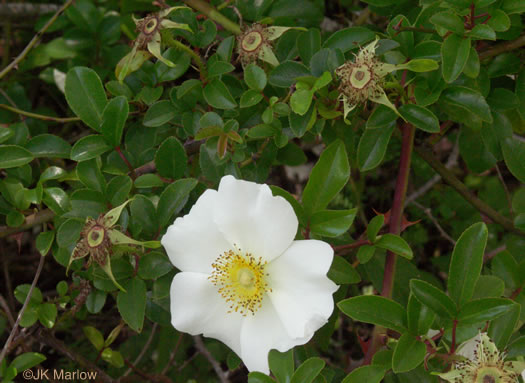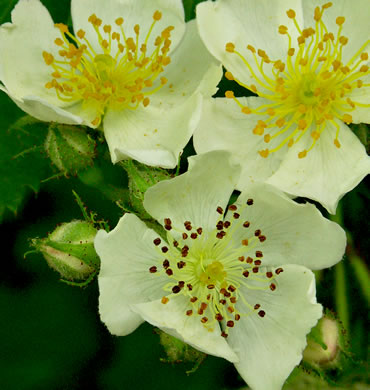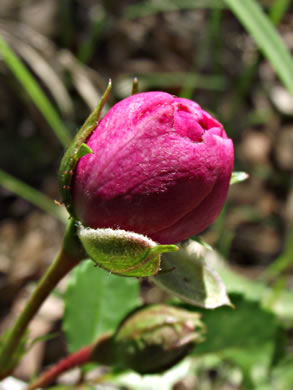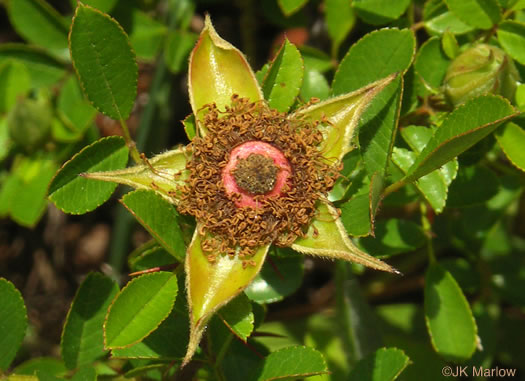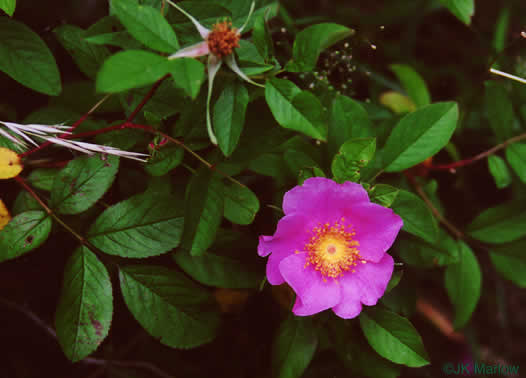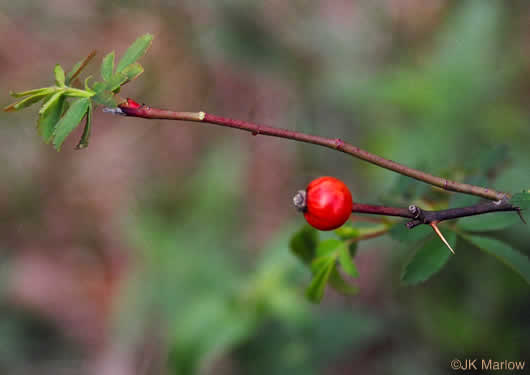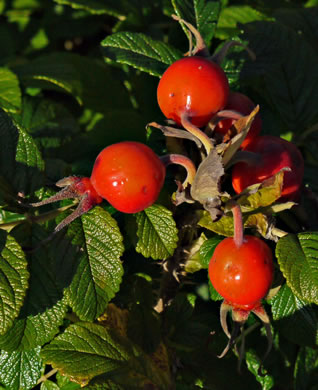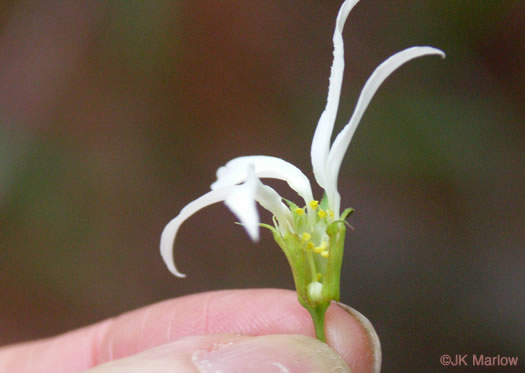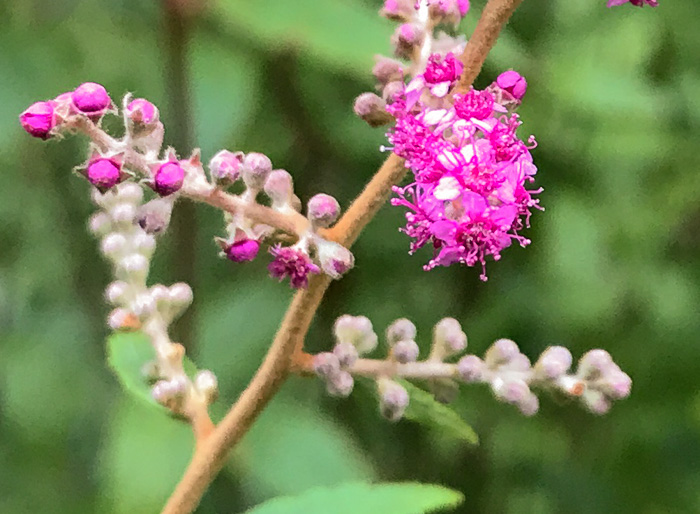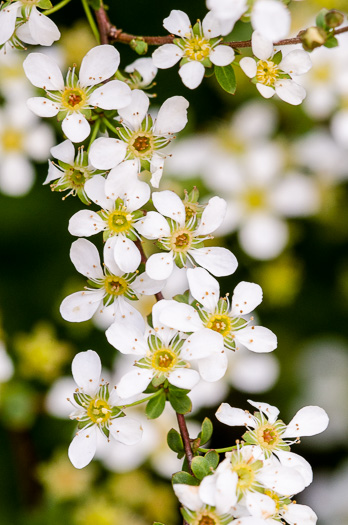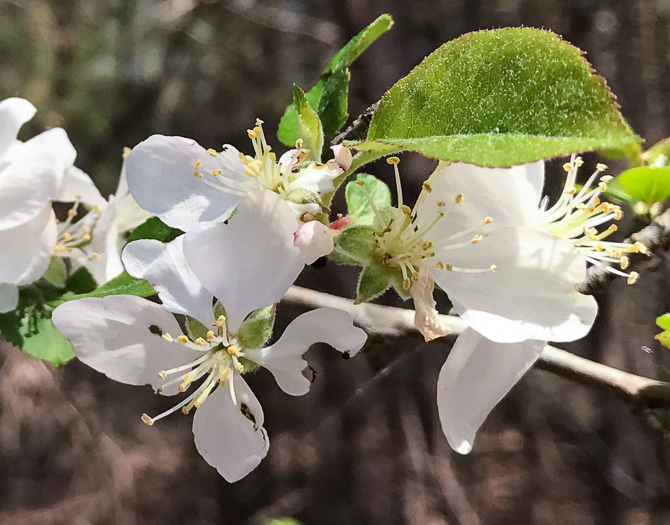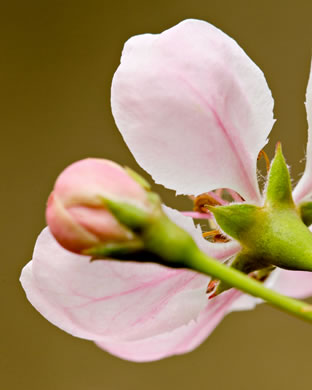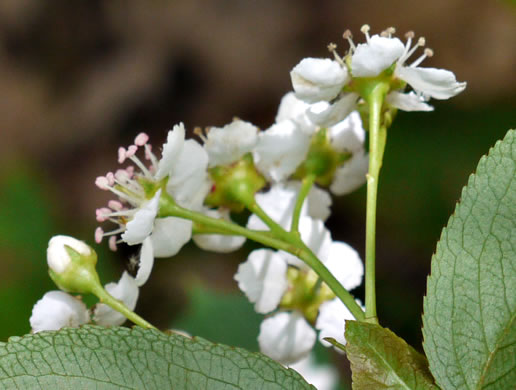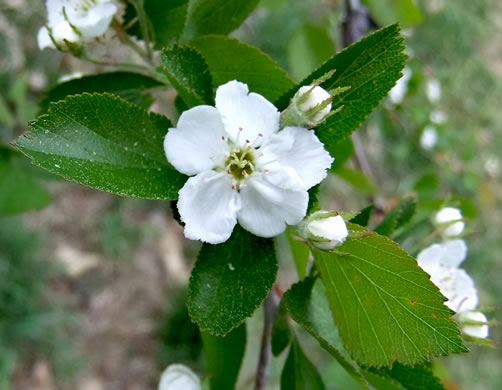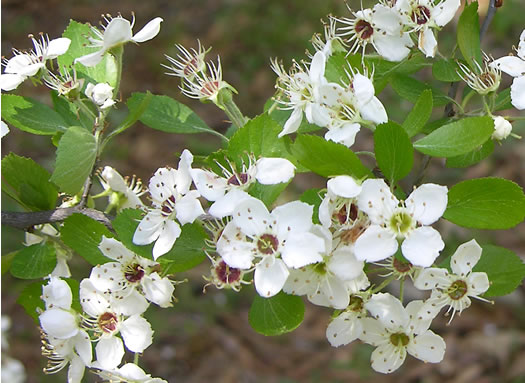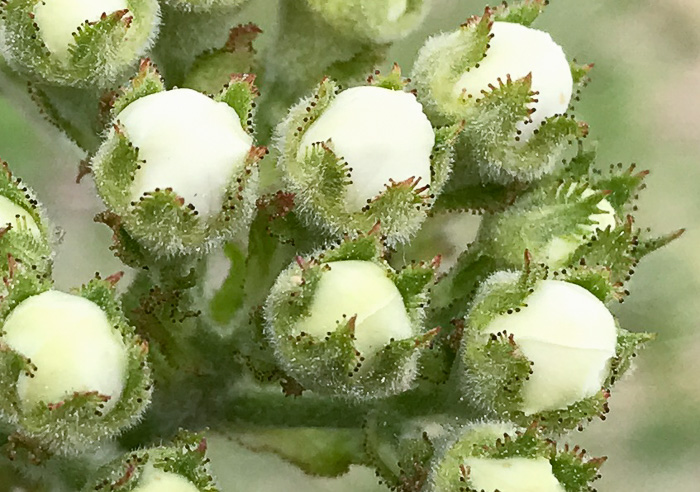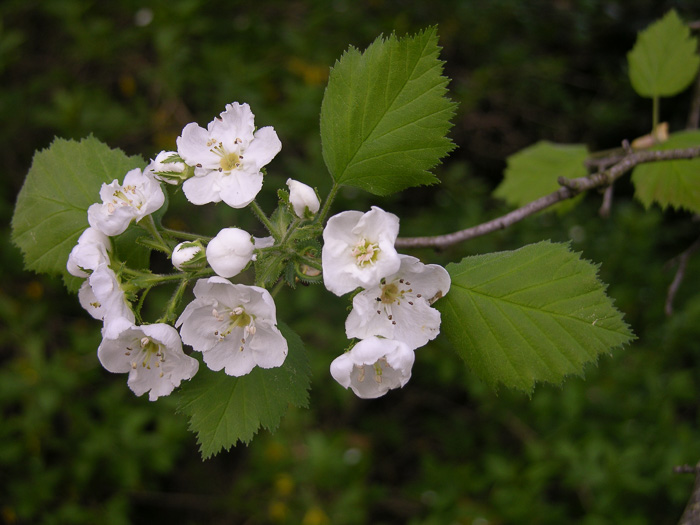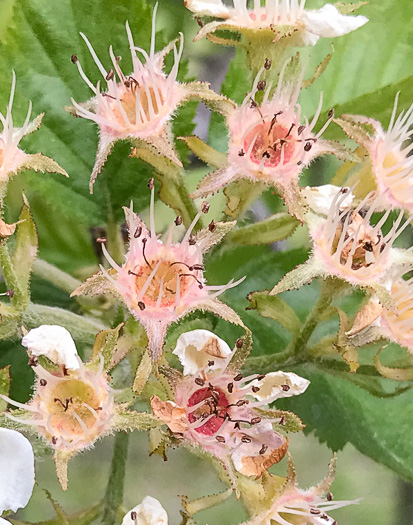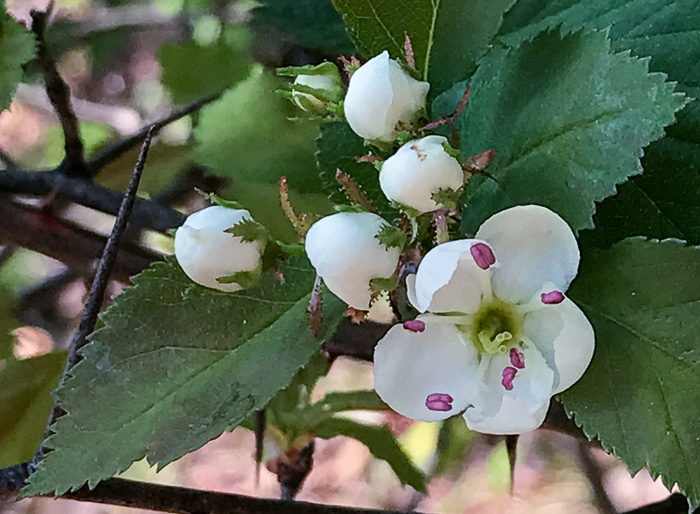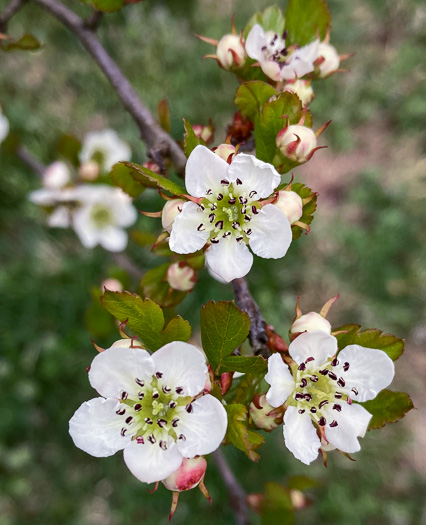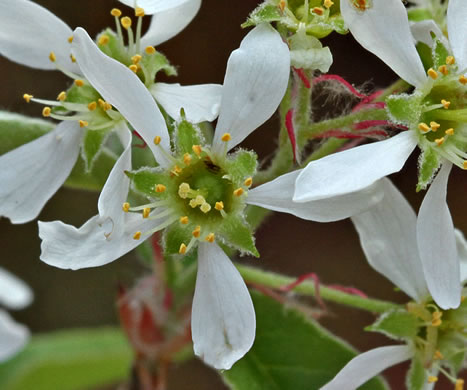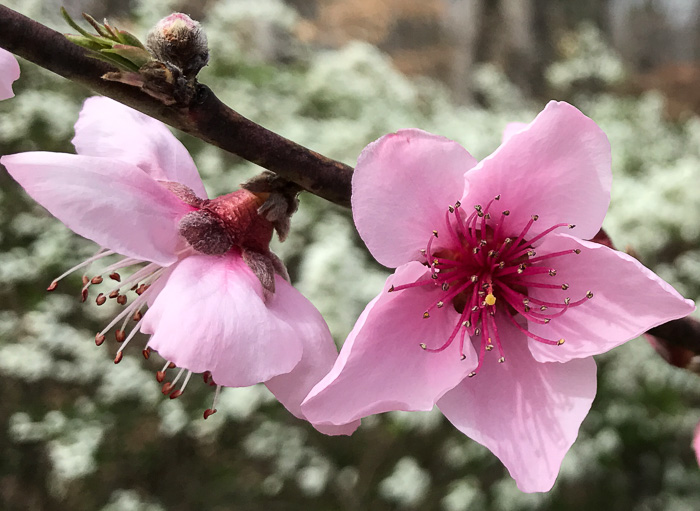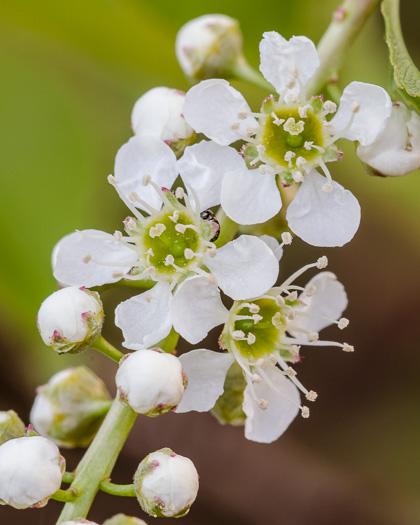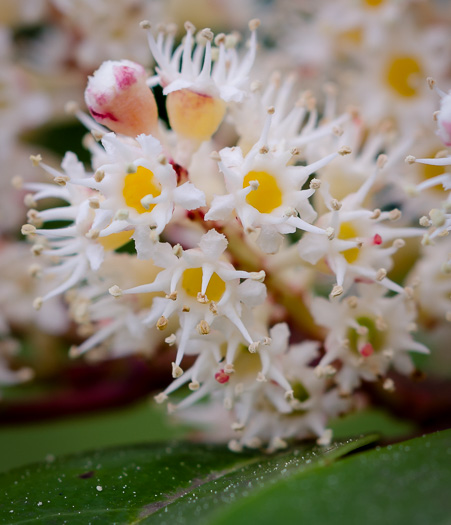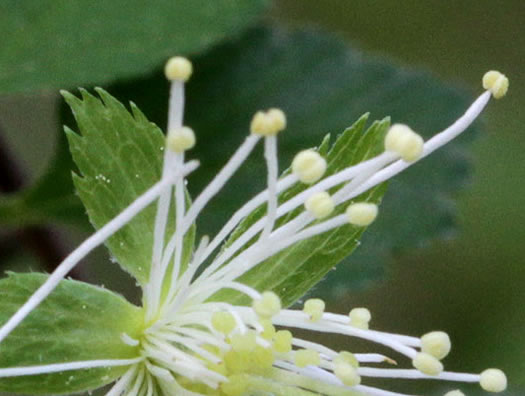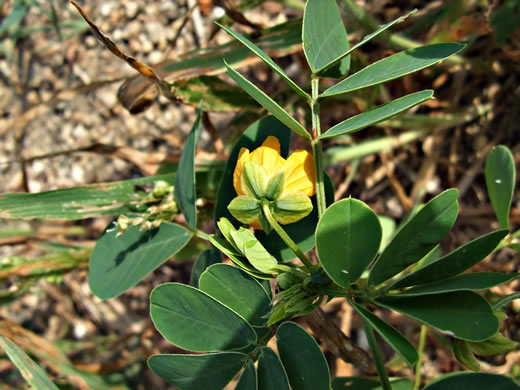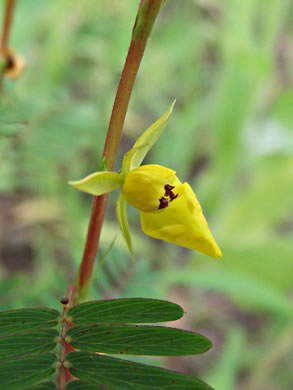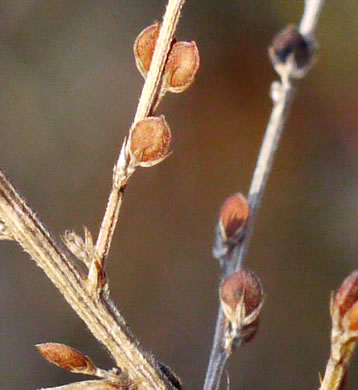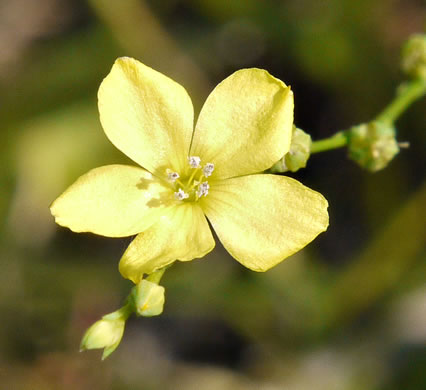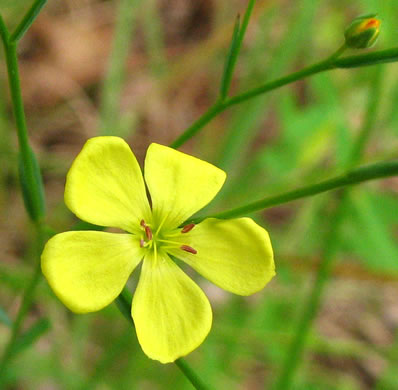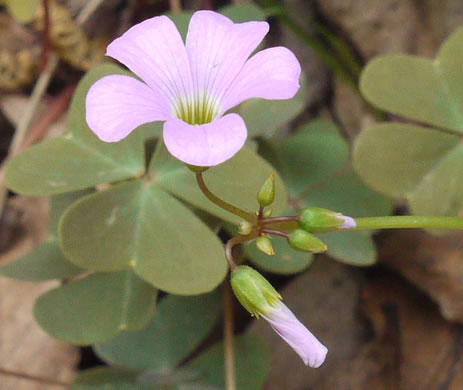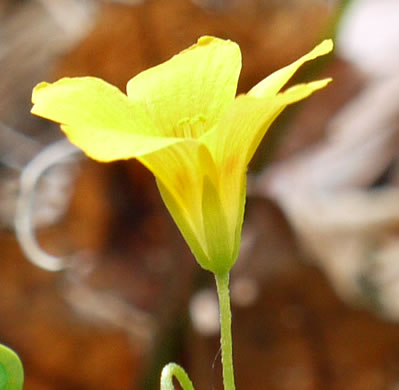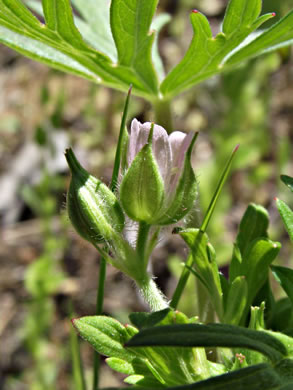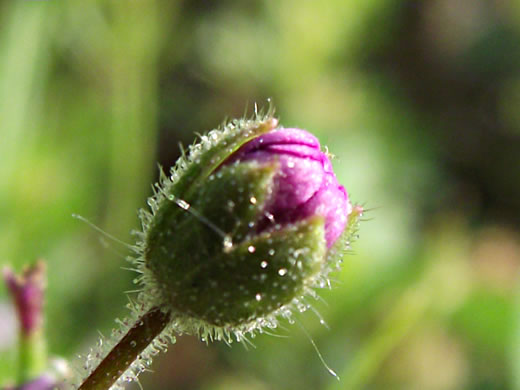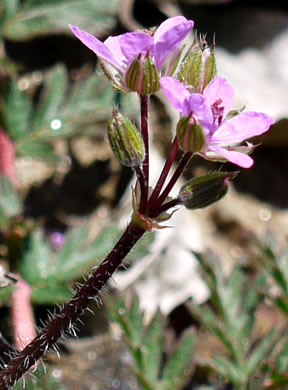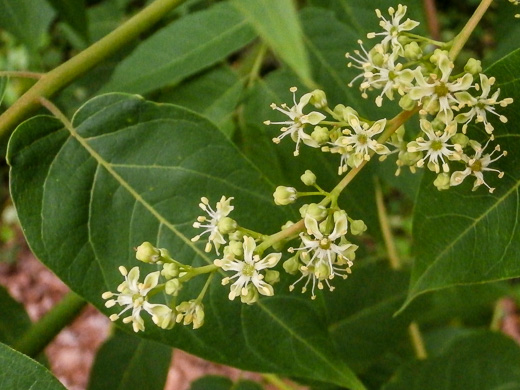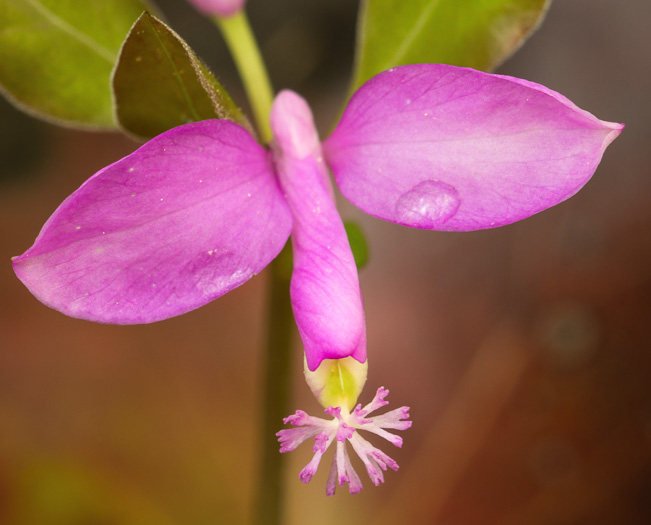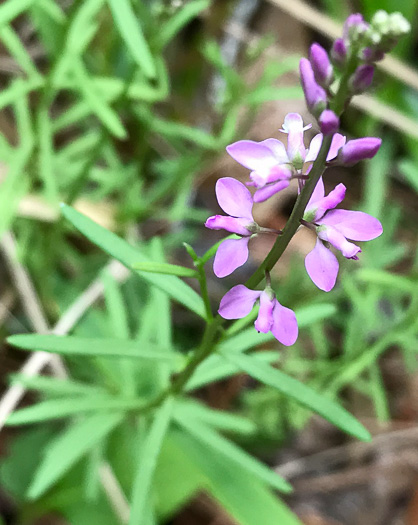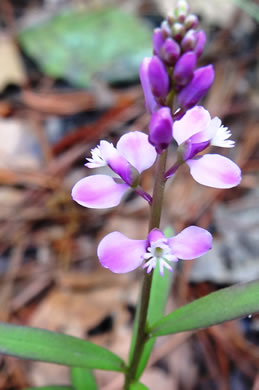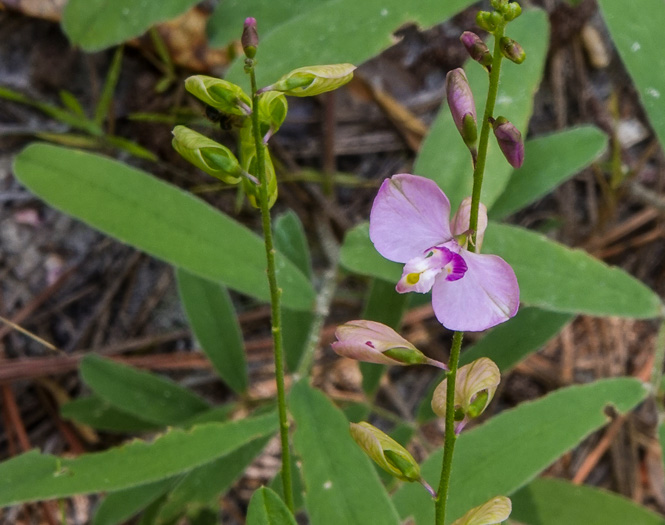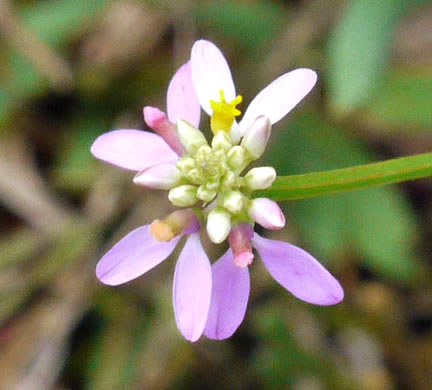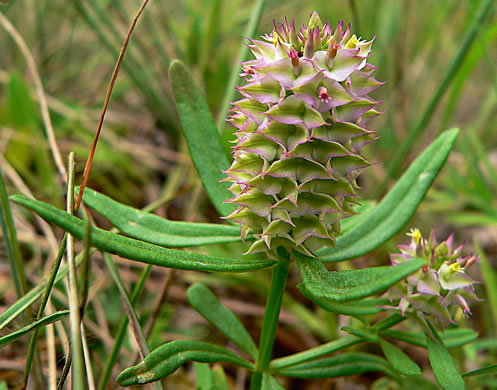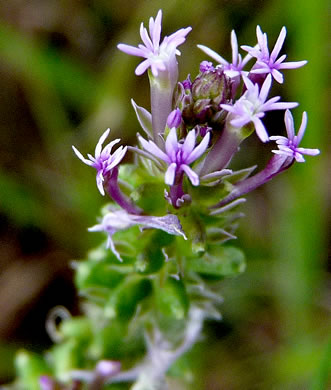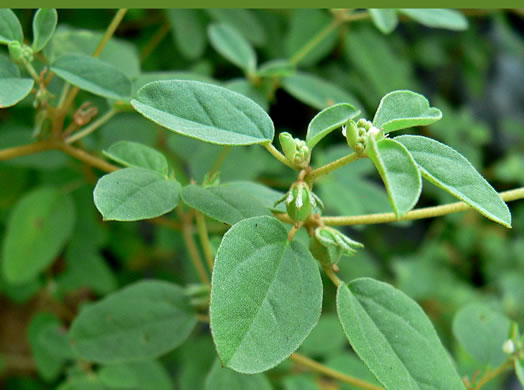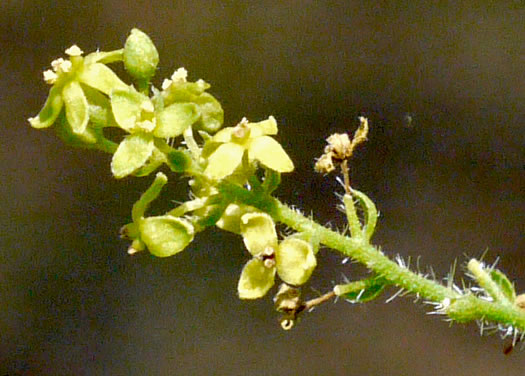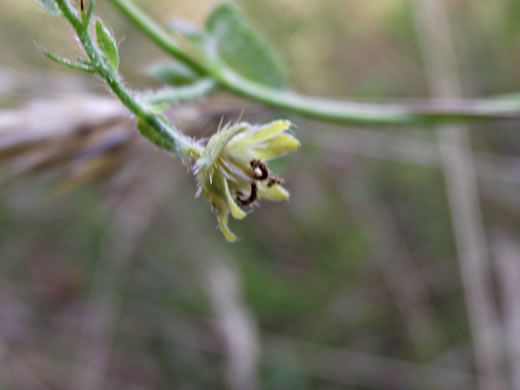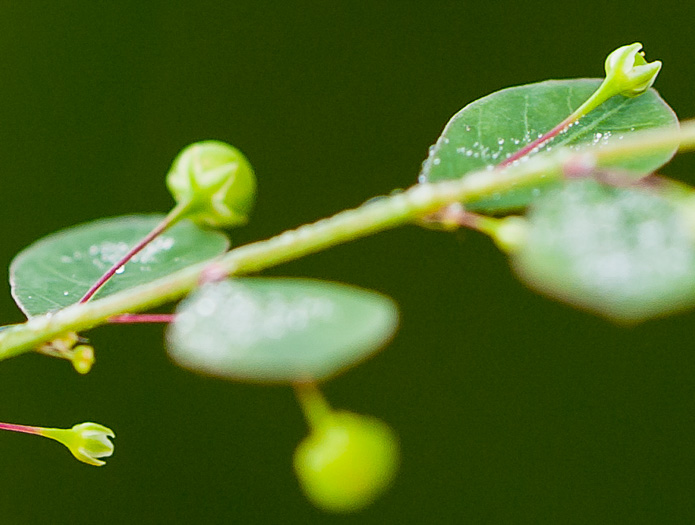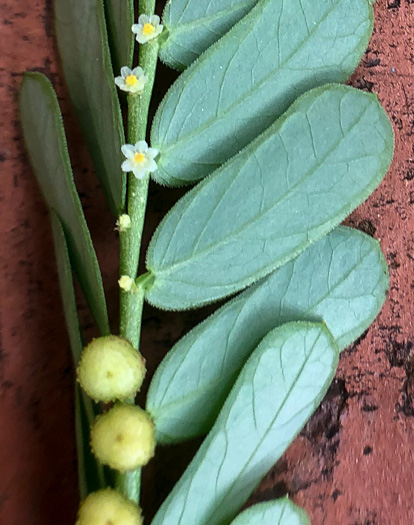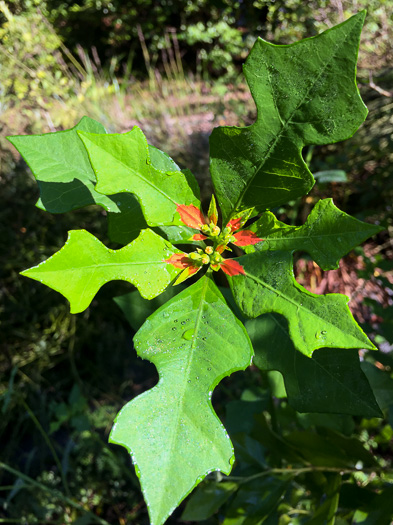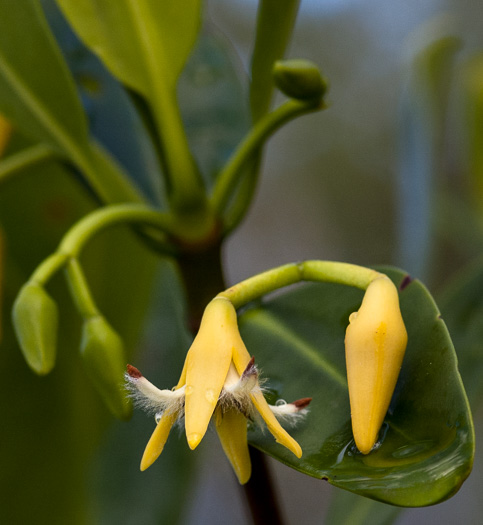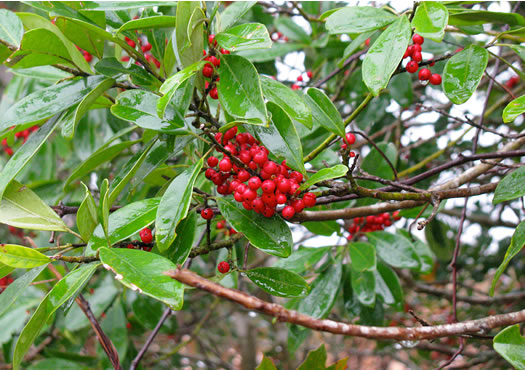Your search found 419 image(s) illustrating the term "sepals." For a written explanation, click on "sepals" in the Glossary.
PAGE 1 PAGE 2 PAGE 3 PAGE 4 PAGE 5 PAGE 6 PAGE 7
To see larger pictures, click or hover over the thumbnails.
To go to the plant's detail page, click its name.
 Pale Avens,
Geum virginianum
Pale Avens,
Geum virginianum
Sepals green, lanceolate, 4-7mm long, acute, spreading to reflexed, per Vascular Flora of the Carolinas (Radford, Ahles, & Bell, 1968).
 Pale Avens,
Geum virginianum
Pale Avens,
Geum virginianum
Flowers about 0.6" wide, the petals much shorter than the sepals, per Wildflowers of Tennessee (Carman, 2005).
 Spring Avens,
Geum vernum
Spring Avens,
Geum vernum
1/4" yellowish flowers, with petals nearly as short as the reflexed sepals, per Wildflowers of the Southern Mountains (Smith, 1998).
 Bent Avens,
Geum geniculatum
Bent Avens,
Geum geniculatum
Hairy greenish-maroon acute-tipped sepals about same length as petals, per Wildflowers of Tennessee, the Ohio Valley, and the Southern Appalachians (Horn, Cathcart, Hemmerly, & Duhl, 2005).
 Canada Burnet,
Sanguisorba canadensis
Canada Burnet,
Sanguisorba canadensis
Flowers have 4 petal-like sepals, 0.15" long; petals are absent, per Wildflowers of Tennessee, the Ohio Valley, and the Southern Appalachians (Horn, Cathcart, Hemmerly, & Duhl, 2005).
 Cherokee Rose,
Rosa laevigata
Cherokee Rose,
Rosa laevigata
Sepals lanceolate, caudate, widened apically, per Vascular Flora of the Carolinas (Radford, Ahles, & Bell, 1968).
 Multiflora Rose,
Rosa multiflora
Multiflora Rose,
Rosa multiflora
Sepals ... usually stipitate-glandular, per Flora of North America.
 Memorial Rose,
Rosa lucieae
Memorial Rose,
Rosa lucieae
Sepals triangular-lanceolate, acuminate, glabrous to puberulent, per Vascular Flora of the Carolinas (Radford, Ahles, & Bell, 1968).
 McCartney Rose,
Rosa bracteata
McCartney Rose,
Rosa bracteata
Sepals lanceolate, acuminate, per Vascular Flora of the Carolinas (Radford, Ahles, & Bell, 1968).
 Swamp Rose,
Rosa palustris
Swamp Rose,
Rosa palustris
Sepals lanceolate, 2-3cm long, long-caudate, per Vascular Flora of the Carolinas (Radford, Ahles, & Bell, 1968).
 Carolina Rose,
Rosa carolina ssp. carolina
Carolina Rose,
Rosa carolina ssp. carolina
Spherical, fleshy rose hip about 1cm wide; sepals present or not at end, per Forest Plants of the Southeast and Their Wildlife Uses (Miller & Miller, 2005).
 Japanese Rose,
Rosa rugosa
Japanese Rose,
Rosa rugosa
Hip dark red, 2-2.5cm in diameter, smooth, with persistent erect sepals, per Flora of China.
 Bowman's Root,
Gillenia trifoliata
Bowman's Root,
Gillenia trifoliata
The hypanthium (formed from fusion of sepals, petals & stamens) is turbinate, per Vascular Flora of the Carolinas (Radford, Ahles, & Bell, 1968).
 Hardhack,
Spiraea tomentosa
Hardhack,
Spiraea tomentosa
Flowers 0.12-0.25" across, with reflexed sepals, per Wildflowers of Tennessee, the Ohio Valley, and the Southern Appalachians (Horn, Cathcart, Hemmerly, & Duhl, 2005).
 Thunberg's Meadowsweet,
Spiraea thunbergii
Thunberg's Meadowsweet,
Spiraea thunbergii
Sepals ovate-triangular; petals white, obovate to suborbiculate, per Flora of North America.
 Common Apple,
Malus domestica
Common Apple,
Malus domestica
Both surfaces of sepals tomentose, margin entire, per Flora of North America.
 Southern Crabapple,
Malus angustifolia
Southern Crabapple,
Malus angustifolia
Sepals lanceolate, 3-5mm long, acute to acuminate, per Vascular Flora of the Carolinas (Radford, Ahles, & Bell, 1968).
 Black Chokeberry,
Aronia melanocarpa
Black Chokeberry,
Aronia melanocarpa
Sepals 1-2mm long, glabrous on the outside, per Vascular Flora of the Carolinas (Radford, Ahles, & Bell, 1968).
 Bristol Hawthorn,
Crataegus visenda
Bristol Hawthorn,
Crataegus visenda
Sepals glandular-serrate; inflorescence usually pubescent, 3-8 flowered, when lvs ~ half-grown, per Haws: A Guide to Hawthorns of the Southeastern US (Lance, 2014).
 Ravenel's Hawthorn,
Crataegus ravenelii
Ravenel's Hawthorn,
Crataegus ravenelii
Inflorescences tomentose; sepals gland-margined, per Haws: A Guide to Hawthorns of the Southeastern US (Lance, 2014).
 Woolly Hawthorn,
Crataegus mollis var. lanuginosa
Woolly Hawthorn,
Crataegus mollis var. lanuginosa
Sepals usually coarsely glandular-serrate to slightly pectinate, per Haws: A Guide to Hawthorns of the Southeastern US (Lance, 2014).
 Pennsylvania Hawthorn,
Crataegus pennsylvanica
Pennsylvania Hawthorn,
Crataegus pennsylvanica
Inflorescence stems densely hairy; sepals coarsely glandular-serrate. — Ron Lance
 Texas Downy Hawthorn,
Crataegus mollis var. texana
Texas Downy Hawthorn,
Crataegus mollis var. texana
Sepals usually coarsely glandular-serrate to slightly pectinate, per Haws: A Guide to Hawthorns of the Southeastern US (Lance, 2014).
 Buckley's Hawthorn,
Crataegus buckleyi
Buckley's Hawthorn,
Crataegus buckleyi
Sepals glandular-pectinate near base, glandular-serrate beyond, per Haws: A Guide to Hawthorns of the Southeastern US (Lance, 2014).
 Mayhaw,
Crataegus aestivalis
Mayhaw,
Crataegus aestivalis
Flowers 15-20mm wide, stamens 15-20; sepals entire or minutely glandular serrate, per Haws: A Guide to Hawthorns of the Southeastern US (Lance, 2014).
 Coastal Plain Serviceberry,
Amelanchier obovalis
Coastal Plain Serviceberry,
Amelanchier obovalis
Sepals ovate to lanceolate, spreading, base pubescent, per Vascular Flora of the Carolinas (Radford, Ahles, & Bell, 1968).
 Peach,
Prunus persica
Peach,
Prunus persica
Sepals spreading, 3.5-5mm, abaxial surface hairy. Petals dark pink, 10-17mm, per Flora of North America.
 Black Cherry,
Prunus serotina var. serotina
Black Cherry,
Prunus serotina var. serotina
Flowers 7-10mm across, petals white, sepals acute, per Trees of the Southeastern United States (Duncan & Duncan, 1988).
 Carolina Cherry Laurel,
Prunus caroliniana
Carolina Cherry Laurel,
Prunus caroliniana
Sepals 1-1.5mm, obtuse; petals 2-3m long; stamens 10, per Vascular Flora of the Carolinas (Radford, Ahles, & Bell, 1968).
 Alabama Snow-wreath,
Neviusia alabamensis
Alabama Snow-wreath,
Neviusia alabamensis
Flowers have 5-7 green, toothed, persistent sepals, per Wildflowers of Tennessee, the Ohio Valley, and the Southern Appalachians (Horn, Cathcart, Hemmerly, & Duhl, 2005).
 Coffeeweed,
Senna obtusifolia
Coffeeweed,
Senna obtusifolia
Sepals unequal, per Vascular Flora of the Carolinas (Radford, Ahles, & Bell, 1968).
 Common Partridge-pea,
Chamaecrista fasciculata var. fasciculata
Common Partridge-pea,
Chamaecrista fasciculata var. fasciculata
Sepals lanceolate, 9-12mm long, acute. Pedicels 1-2cm long, per Vascular Flora of the Carolinas (Radford, Ahles, & Bell, 1968).
 Sensitive Partridge-pea,
Chamaecrista nictitans var. nictitans
Sensitive Partridge-pea,
Chamaecrista nictitans var. nictitans
Sepals lanceolate, 3-4mm long, acuminate, per Vascular Flora of the Carolinas (Radford, Ahles, & Bell, 1968).
 Sericea Lespedeza,
Lespedeza cuneata
Sericea Lespedeza,
Lespedeza cuneata
Flat single-seeded legume pod, 3-4mm wide, clasped by persistent sepals, per Nonnative Invasive Plants of Southern Forests (Miller, 2003).
 Ridgestem Yellow Flax,
Linum striatum
Ridgestem Yellow Flax,
Linum striatum
5 yellow petals, 4-7mm long. Sepals lance-ovate to ovate, 1.5-2mm long, per Vascular Flora of the Carolinas (Radford, Ahles, & Bell, 1968).
 Virginia Yellow Flax,
Linum virginianum
Virginia Yellow Flax,
Linum virginianum
5 yellow petals, 4-8mm long. Sepals lanceolate, 2-3mm long, acute to acuminate, per Vascular Flora of the Carolinas (Radford, Ahles, & Bell, 1968).
 Violet Wood-sorrel,
Oxalis violacea
Violet Wood-sorrel,
Oxalis violacea
Sepals 4-7mm long, glabrous, each with an orange gland at the apex, per Vascular Flora of the Carolinas (Radford, Ahles, & Bell, 1968).
 Small's wood-sorrel,
Oxalis colorea
Small's wood-sorrel,
Oxalis colorea
Sepals 3.5-5mm, apices without tubercles, per Further Observations on the Oxalis dillenii Group (Oxalidaceae) (Nesom et al., 2014).
 Wild Geranium,
Geranium maculatum
Wild Geranium,
Geranium maculatum
Sepals 7-10mm long excluding the 1-3mm mucro, canescent with long trichomes, per Vascular Flora of the Carolinas (Radford, Ahles, & Bell, 1968).
 Carolina Cranesbill,
Geranium carolinianum
Carolina Cranesbill,
Geranium carolinianum
Sepals 5-7mm long excluding the 1-2mm long mucro, densely pubescent, per Vascular Flora of the Carolinas (Radford, Ahles, & Bell, 1968).
 Dove's-foot Cranesbill,
Geranium molle
Dove's-foot Cranesbill,
Geranium molle
Sepals 3-4mm long, mucro about 0.3mm long, per Vascular Flora of the Carolinas (Radford, Ahles, & Bell, 1968).
 Common Storksbill,
Erodium cicutarium
Common Storksbill,
Erodium cicutarium
Flowers in a two-planed umbel with an involucre. Sepals hoodlike and mucronate, per Vascular Flora of the Carolinas (Radford, Ahles, & Bell, 1968).
 Ailanthus,
Ailanthus altissima
Ailanthus,
Ailanthus altissima
5 sepals each < 1mm long; 5 petals each 1.5-2.5mm long, per Vascular Flora of the Carolinas (Radford, Ahles, & Bell, 1968).
 Gaywings,
Polygaloides paucifolia
Gaywings,
Polygaloides paucifolia
Corolla tube consists of 3 united petals; the "wings" are a pair of sepals, per Wildflowers of the Southern Mountains (Smith, 1998).
 Racemed Milkwort,
Senega polygama
Racemed Milkwort,
Senega polygama
"Wings" [2 sepals] 4-6mm long and tapered to claws; corolla slightly shorter, per Vascular Flora of the Carolinas (Radford, Ahles, & Bell, 1968).
 Racemed Milkwort,
Senega polygama
Racemed Milkwort,
Senega polygama
Common to all milkworts are a 3-petalled corolla tube & 2 "wings" (sepals), per Wildflowers of the Southern Mountains (Smith, 1998).
 Showy Milkwort,
Asemeia grandiflora
Showy Milkwort,
Asemeia grandiflora
Flowers w 2 rounded "wings" (petal-like sepals) & 3 petals forming a tube w/o a fringe at the tip, per Atlantic Coastal Plain Wildflowers (Nelson, 2006).
 Curtiss's Milkwort,
Senega curtissii
Curtiss's Milkwort,
Senega curtissii
The wings are a pair of spreading sepals; the corolla tube 3 united petals, per Wildflowers of the Southern Mountains (Smith, 1998).
 Drumheads,
Senega cruciata
Drumheads,
Senega cruciata
Common to all milkworts are a 3-petalled corolla tube & 2 "wings" (sepals), per Wildflowers of the Southern Mountains (Smith, 1998).
 Drumheads,
Senega cruciata
Drumheads,
Senega cruciata
The wings (sepals) in this Milkwort species are broadly triangular, per Wildflowers of the Southern Mountains (Smith, 1998).
 Pink Milkwort,
Senega incarnata
Pink Milkwort,
Senega incarnata
Common to all milkworts are a 3-petalled corolla tube & 2 "wings" (sepals), per Wildflowers of the Southern Mountains (Smith, 1998).
 Tall Pinebarren Milkwort,
Senega cymosa
Tall Pinebarren Milkwort,
Senega cymosa
Flowers tiny, with 2 "wings" (sepals) & 3 joined petals forming a tiny tube with fringed tip, per Wildflowers of the Atlantic Southeast (Cotterman, Waitt, & Weakley, 2019).
 Prairie-tea Croton,
Croton monanthogynus
Prairie-tea Croton,
Croton monanthogynus
Flowers minute. Male 3-5 tiny petals & sepals; female 5 sepals, no petals, per Wildflowers of Tennessee, the Ohio Valley, and the Southern Appalachians (Horn, Cathcart, Hemmerly, & Duhl, 2005).
 Nettleleaf Noseburn,
Tragia urticifolia
Nettleleaf Noseburn,
Tragia urticifolia
Staminate flowers with 3-5 sepals and 2-3 stamens (no petals), per Vascular Flora of the Carolinas (Radford, Ahles, & Bell, 1968).
 Nettleleaf Noseburn,
Tragia urticifolia
Nettleleaf Noseburn,
Tragia urticifolia
Pistillate flowers with 3-8 sepals and 3 stigmas, per Vascular Flora of the Carolinas (Radford, Ahles, & Bell, 1968).
 Mascarene Island Leaf-flower,
Moeroris tenella
Mascarene Island Leaf-flower,
Moeroris tenella
Sepals white except for a green midrib, per Flora of North America.
 Chamber Bitter,
Emblica urinaria
Chamber Bitter,
Emblica urinaria
Both male and female flowers have 6 sepals; petals are absent, per Flora of North America.
 Wild Poinsettia,
Euphorbia cyathophora
Wild Poinsettia,
Euphorbia cyathophora
Flowers have no petals or sepals. Upper lvs reddish (or white) at the base, per Wildflowers of Tennessee, the Ohio Valley, and the Southern Appalachians (Horn, Cathcart, Hemmerly, & Duhl, 2005).
 Red Mangrove,
Rhizophora mangle
Red Mangrove,
Rhizophora mangle
Sepals widely spreading, leathery. Petals recurved, adaxially woolly, per Flora of North America.
 Dahoon,
Ilex cassine
Dahoon,
Ilex cassine
Fruit a globose shiny red drupe about 3/8" in diameter, sepals persisting, per Native Trees of the Southeast, An Identification Guide (Kirkman, Brown, & Leopold, 2007).

